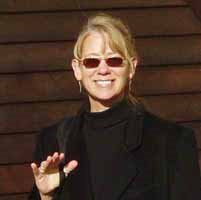It only makes sense that a company in the business of book publishing would want to use its website to make sales. The site is there for consumers to find and explore, and I can't think of a single reason not to include a shopping cart for purchasing.
A publisher's website is also a great place to highlight and push certain titles. Most of the sites I explored had added content about the authors—video interviews, tour dates. Why rely solely on bookstores and Amazon to present your product?
This said, I think a targeted approach is wise. Why try to reach every potential customer with a single, watered down, chaotic website when all large publishers use their imprints to target a smaller subset of their audience?
I think the best approach is for huge publishers to keep the corporate identity low-key and try to steer customers to the right imprint where they are more likely to find the books they'll want to read.
Imprints should reflect a united and cohesive collection. It is a basic tenet of marketing to know your customer and give them what they want. So why not create an online presence to reflect the target of your imprint? Make a club. Let your readers feel part of something—no different than being part of an online social network.
McSweeney's and Tin House both do a great job of this. They embrace their brand. Larger publishers should do the same and put more effort into branding their imprints and creating networks around them.
I have no idea if consumers will seek out publisher's websites to purchase books. If given the incentive—lower pricing, peer reviews and recommendations, convenience, and availability—they should. Publishers make a product and should be able to control the avenues of sales to some extent. But at the moment, it looks like Amazon will continue to keep a tight grip on the business of selling books.


